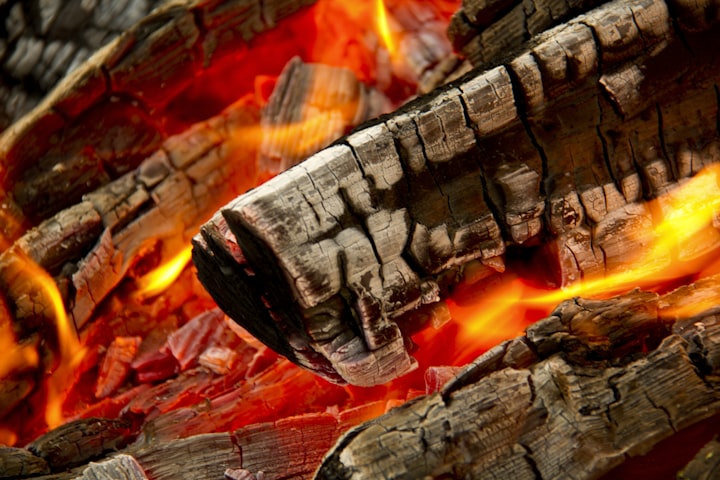
Coal mining dates back thousands of years, with the earliest recorded times of coal mining in ancient China and the ancient Roman Empire, including other early historical economies in history.
We all know that coal emerges from the carbonization of trees over hundreds of thousands of years of deposition.
Coal is capable of producing higher energy per unit of coal compared to wood burning, resulting in higher specific energy.
For a long time, coal has been an excellent choice of fuel for domestic use.
Despite its many unmitigated effects, such as smog and combustion waste, coal was used quite abundantly until natural gas completely replaced it as a domestic fuel.
Today coal is used more in industrial manufacturing and industrial production, especially in smelting, alloys, and power generation, and it is almost difficult to find a raw production material as simple as coal.
After the Industrial Revolution, the technology for mining coal improved even more dramatically.

Coal could be produced on a large scale by open pit mining, both at the exposed surface of the seam and relatively shallow depths.
It was not until the late 18th century that the primary technology for mining underground coal seams was developed in England, and this technology was advanced through the 19th and 20th centuries.
Surface mined coal seams are no longer common today, and in addition to the historical factors of man-made mining on a non-renewable resource like coal, surface coal seams require a certain amount of natural preservation to allow them to be exposed to the surface.
Of the two factors that determine the mining method, seam thickness and geology are the main ones.
For surface coal mining, the most economical method of mining is the electric shovel type of production tool.
It has a rotating drum with two carbide bits that run along a portion of the seam and mine the seam like an onion.

Thus surface mining and deep underground mining are the two basic methods of coal mining, and the choice of mining method depends mainly on the depth, density, overburden, and thickness of the coal seam.
If relatively close to the surface, coal seams less than 55 meters in depth can generally be mined by open pit mining.
Coal seams produced at depths of 55 to 90 meters are typically deep mined and can be more complex and challenging if deeper than 90 meters.
However, there are very unusual examples of surface mining operations even in coal seams 300 to 460 meters below ground.
Suc seams are usually rich in coal and have well-defined seams and a stable geological structure that allows large equipment to mine at depth.
The downward encircling mining method will allow the coal seam to gradually form a large pit, and vehicles will then be transported through the mined-out road.
One might wonder how these 100-meter-thick coal seams were formed.
If the formation of coal requires the support of trees to deposit so much coal. Were there so many plants on the ancient earth?
The formation of coal is more complex and has to be analyzed from several aspects, starting with the formation process.
The process by which dead plants are transformed into coal is called coalification, and coalification manifests itself differently at different times in the Earth's geological history.
In low-lying wetland areas, the plant material is protected from biodegradation and oxidation after the plant dies.
Usually, this process is accomplished by mud or acidic water and becomes peat in a long-term accumulation process.
This traps carbon in huge peat bogs, which are eventually buried deep in the ground by sediment.
After millions of years of deposition, the deeply buried mire is subjected to heat and pressure, resulting in the loss of water, carbon dioxide, and methane from the peat and an increase in the proportion of carbon.
In this respect, therefore, the production-grade of coal depends on the maximum pressure and temperature reached.
Among the factors involved in coalification, the temperature is much more important than pressure or burial time.
For example, sub-bituminous coals can be formed at temperatures as low as 35 to 80 degrees Celsius, while anthracite coals require at least 180 to 245 degrees Celsius to form.
Also important in the formation of coal is the role of accumulation, which requires a large number of plants to be involved.
Plant accumulation can be roughly divided into in situ accumulation and ex situ accumulation. The former usually refers to the slow accumulation of plant debris directly in situ without the transporting effect of running water or wind.
The latter situation is the opposite, where coal accumulation occurs in other places where there is no plant accumulation due to water flow or other external factors.
For example, the North China Plain in China, where the coal seams are influenced by the rivers of the western highlands, thus bringing a large amount of coal.
Again, there is the role of microorganisms, which appear in the already dead plants and then gradually decompose them to form new organisms.
On a chemical level, the woody tissue of plants consists mainly of cellulose, hemicellulose and lignin.
Modern peat is mostly lignin, with cellulose and hemicellulose occupying about 40% of the content, and other organic compounds are also present.
Regardless of lignin or cellulose, the most retained elements are carbon, hydrogen, oxygen, and coal as a result of high plant carbonization, which means that coal will be mainly dehydrated, decarboxylated, and de-methane.
In addition to this, the coal formed after the death of different plant types differs significantly.
For example, sporophytes mainly produce bituminous and anthracite coals, while in the case of angiosperms of the Cenozoic period lignite and peat are predominant.
After this series of introductions, we have learned that there are also factors influencing the specific process of coal formation.
A simple reflection shows that those exceptionally thick coal seams often require a large number of plants for their deposition.
Although coal was present in most geological periods of the Earth, all coal seams are basically in the Carboniferous and Permian periods.
The Late Paleozoic glacial period, when falling sea levels due to glaciation provided ideal conditions for coal formation, largely ended after the Triassic.
During the last few billion years, between the Carboniferous and Triassic periods, the Earth's climate was warm and moist enough for plant growth.
As a result, plants were abundant enough and very tall during this period.
In addition, in the ancient era of the Earth, the plant growth environment was mainly dominated by algae and mycorrhizal plants, including the swamps in the Carboniferous period.
These are the favorable factors for coal deposition.
Another factor that cannot be ignored in extra-thick coal seams is the influence of geological activity.
Geologists have generally found in their studies of extra-thick coal seams that in addition to the abundance of plants, crustal movements have little effect on the formation of such a coal seam.
This gives a stable environment for the deposition process, from which no faulting occurs.
However, the favorable geographical location and a large number of plants alone cannot explain the Carboniferous coal seams extensively. Other factors that led to the rapid deposition of coal seams were the high oxygen content.
High oxygen content means an abundance of vegetation
This promotes wildfires and increases the occurrence of charcoal.
However, 300 million years ago, the formation of coal seams was abruptly slowed down.
Scientists later concluded that the appearance of lignin caused the trees to be deposited in time for carbonization.
Lignin, evolved by fungi, can break down the structure of trees and degrade lignin in large quantities.
Related analyses suggest that an ancestor of a white-rot fungus evolved this lignin-degrading ability about 290 million years ago.
In early trees, the presence of lignin allowed plants to grow harder and more lignified.
However, fungi and bacteria had not yet evolved the ability to decompose during this period. Therefore trees did not decay completely after death, but were buried in the ground following geological deposits and eventually carbonized to form coal.
White rot fungi break down lignin simply by releasing active molecules and enzymes that "tear apart" the plant's protective compounds.
Once the lignin that protects the tree is broken down, the white rot fungus can digest and absorb the cellulose, which it then converts into sugar for its growth.
So in these ways, the ancient earth did have sufficient resources to allow coal to develop slowly.
In addition, during several important periods of coal production on Earth, more than 60 million years was enough time for coal seams to develop.
Today, however, scientists have discovered that brown rot fungi have evolved an ability to bypass lignin decomposition so that plants retain lignin after death, even when decomposed by the fungus.
- Scientists believe that brown logs that have died in forests in temperate regions will gradually form coal in a few million years.
Such a future is very distant, and what is needed now is to avoid as much as possible the environmental problems caused by reliance on coal resources.






Comments
There are no comments for this story
Be the first to respond and start the conversation.